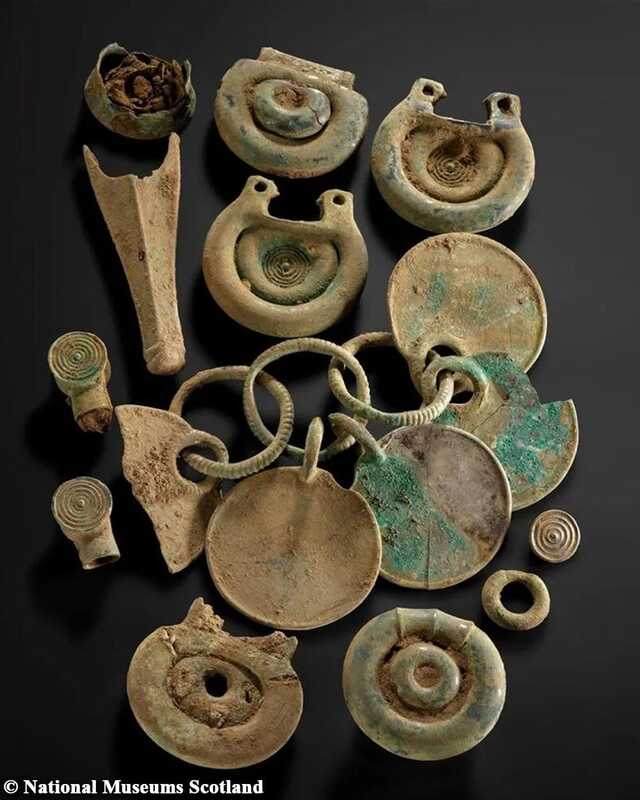In the rolling hills of the Scottish Borders, a remarkable discovery has reshaped our understanding of Scotland’s ancient past. Unearthed by metal detectorist Mariusz Stepien in 2020, the Peebles Hoard offers a tantalizing glimpse into the lives, craftsmanship, and international connections of Bronze Age communities. This unique find, dating back over 3,000 years, has captivated archaeologists and history enthusiasts alike, revealing a treasure trove of artifacts that speak of a time when Scotland was deeply connected to a broader European network.
1. Discovery of a Hidden Treasure
It was a chance moment that brought the Peebles Hoard to light. Exploring the fields near Peebles, Mariusz Stepien’s metal detector revealed an astonishing find—a collection of bronze objects buried in the soil. Stepien immediately recognized the significance of his discovery and notified Scotland’s Treasure Trove Unit, setting in motion a meticulous process of excavation.
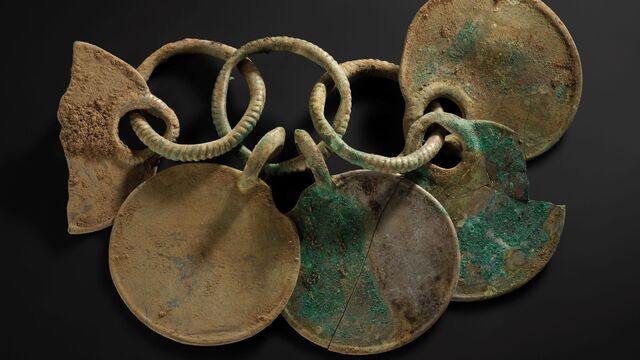
Archaeologists carefully removed the hoard in a single block of earth, preserving the fragile context of the artifacts. The block was then transported to the National Museums Collection Centre in Edinburgh, where researchers would spend months uncovering its secrets. This careful approach allowed scientists to study the objects in their original arrangement, providing valuable insights into how the hoard was assembled and buried.
Video:
2. The Unique Contents of the Hoard
What makes the Peebles Hoard truly exceptional is the diversity and craftsmanship of its artifacts. Comprising over 500 items, many of the pieces are unlike anything previously discovered in Scotland or western Europe.
Among the standout finds are:
- Rattle pendants: These delicate bronze objects are the first of their kind found in Scotland. Similar artifacts have been discovered in Denmark, northern Germany, and Poland, suggesting that Scotland was part of a widespread trade and cultural network during the Bronze Age.
- A bronze sword and scabbard: Remarkably preserved, this weapon highlights the importance of warriors and martial culture in Bronze Age society.
- Interlinked bronze rings and pendant plates: Likely used to decorate horses or vehicles, these items would have rattled as they moved, adding a sensory element to ceremonial or practical functions.
- Buttons and decorative straps: These small yet intricate items showcase the advanced metallurgical skills of Bronze Age artisans.
The combination of functional and decorative objects reveals much about the lives and values of Scotland’s ancient communities.
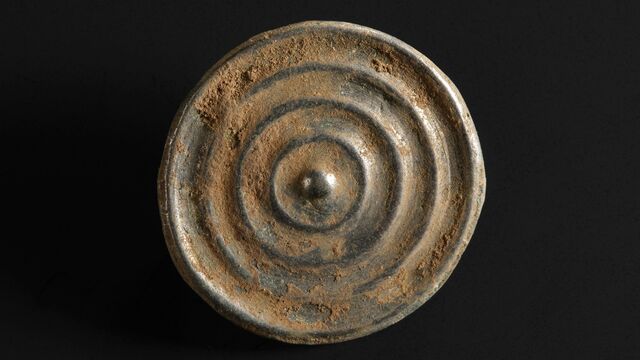
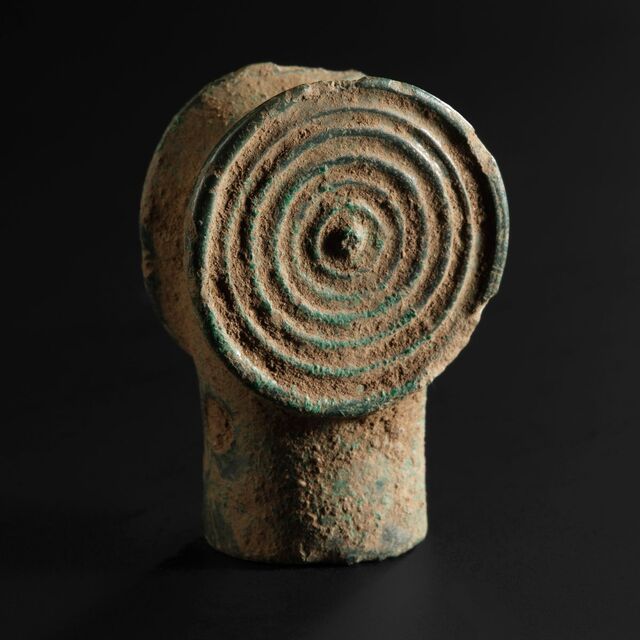
3. Technological Breakthroughs in Analysis
To unlock the secrets of the Peebles Hoard, researchers turned to cutting-edge technology. The hoard underwent CT scanning at the µ-VIS X-ray Imaging Centre at the University of Southampton. This non-invasive technique allowed archaeologists to map the internal structure of the hoard, identifying individual objects and their relationships without disturbing the fragile artifacts.
One of the most exciting discoveries was evidence of lost-wax casting, a sophisticated technique used to create detailed metal objects. This is among the earliest evidence of this process in Scotland, highlighting the advanced technological capabilities of Bronze Age craftspeople.
The use of modern imaging technology not only preserved the integrity of the artifacts but also provided valuable data for future research.
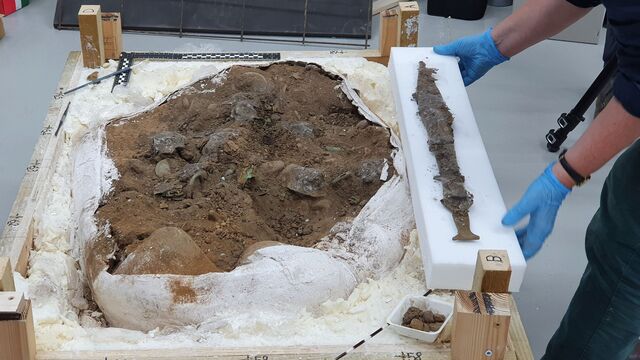
4. Scotland’s Role in a Wider World
The Peebles Hoard challenges traditional views of Scotland as an isolated, peripheral region during the Bronze Age. Instead, it reveals a society deeply connected to the broader European world.
The presence of artifacts with parallels in northern Europe suggests that Scotland participated in an extensive trade network spanning the North Sea. This network facilitated the exchange of goods, ideas, and technologies, shaping the cultural and social landscape of Bronze Age Scotland.
The decorative items in the hoard, such as the rattle pendants and interlinked rings, highlight the importance of ceremony and display. These objects likely played a role in religious or social rituals, reflecting shared cultural practices across the region.
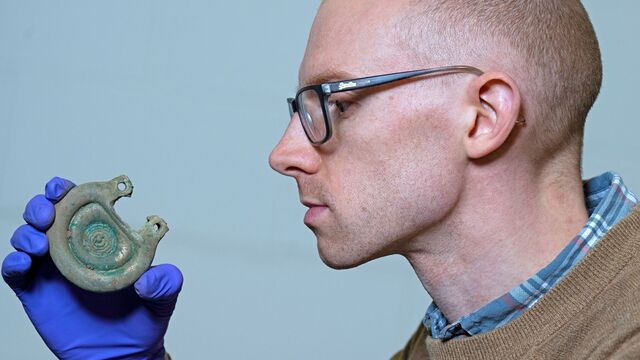
5. Social Structures and Craftsmanship
The Peebles Hoard also offers insights into the social dynamics of Bronze Age communities. The inclusion of finely crafted items suggests a society with skilled artisans and a hierarchical structure capable of supporting specialized labor.
The craftsmanship evident in the artifacts points to a high degree of skill and knowledge. Techniques like lost-wax casting require a deep understanding of metallurgy and precision, indicating that Bronze Age artisans were both highly trained and innovative.
Additionally, the variety of items in the hoard suggests that these objects held different functions and meanings, from practical tools to symbols of status and power.
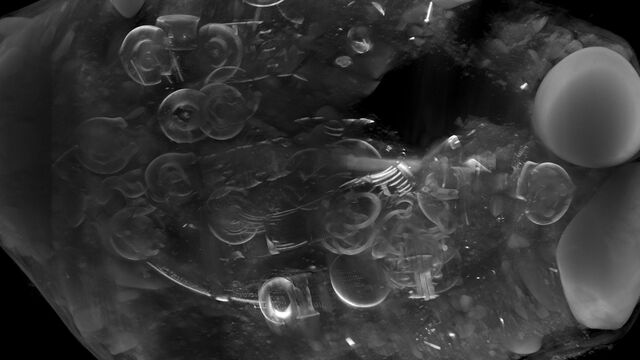
6. Excavation and Preservation Efforts
Following the discovery of the hoard, a team of archaeologists and conservators undertook a meticulous excavation at the National Museums Collection Centre. Over months of careful work, they unearthed the fragile components of the hoard, revealing its full extent for the first time in thousands of years.
Efforts are now underway to secure funding for the continued research and conservation of the Peebles Hoard. These efforts aim to uncover even more about the hoard’s origins, use, and significance, ensuring that this extraordinary find is preserved for future generations.
Public exhibitions of the hoard will allow people to connect with Scotland’s ancient past, fostering a deeper appreciation for the country’s rich cultural heritage.
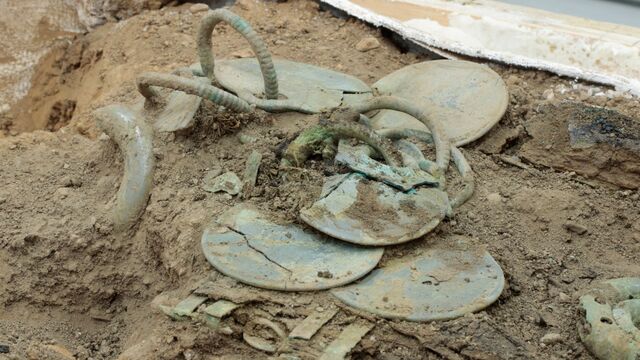
7. The Broader Impact of the Discovery
The Peebles Hoard has had a profound impact on our understanding of Bronze Age Scotland. It highlights the complexity and sophistication of ancient communities, challenging outdated notions of prehistoric societies as primitive or isolated.
The hoard also underscores the importance of collaboration between amateur metal detectorists and professional archaeologists. Without Stepien’s responsible actions, this treasure trove might have remained hidden, depriving us of invaluable insights into our shared past.
Finally, the discovery serves as a reminder of the power of archaeology to connect us with the lives and stories of those who came before us. By studying the objects they left behind, we can better understand the people who shaped our world.
Conclusion
The Peebles Hoard is more than just a collection of ancient artifacts—it is a time capsule, offering a glimpse into a world that existed over 3,000 years ago. Through its unique items and advanced craftsmanship, it tells the story of a vibrant, interconnected Scotland at the heart of Bronze Age Europe. As research and conservation efforts continue, the hoard stands as a testament to the enduring power of archaeology to uncover the hidden stories of our past and inspire future generations.
